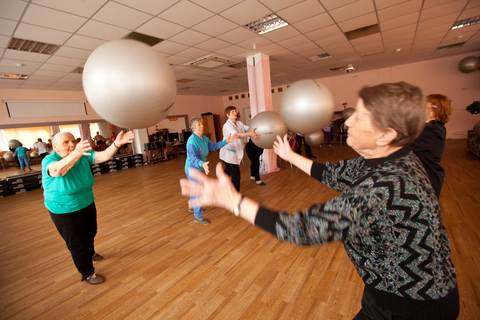Medicine balls found commonly in the therapy clinic may be extremely useful as a fall prevention tool among older adults, according to research at University of Illinois at Chicago. A study there determined a simple routine of throwing and catching a weighted medicine ball can improve balance and potentially help prevent falls among older adults.
In a statement from UIC, researcher Alexander Aruin, professor of physical therapy, notes that when a person is jostled by a bum or stumble, the brain uses two strategies to maintain balance and prevent a fall. “When the perturbation is predictable, for example, if when walking down the street you see someone about to bump into you, you brace yourself,” Aruin says. The brain activates muscles in anticipation of the jolt.
Aruin describes the second strategy as “corrective.” He explains that the brain engages muscles after the perturbation to prevent individuals from losing balance, which might involve taking an extra step, or changing body position.
In the UIC release Aruin goes on to explain that as humans age, they lose their anticipatory postural control, the ability to ready ourselves to maintain balance. As a result, there is no preparatory activation of muscles, leaving individuals with only compensatory action.
“In effect,” Aruin says, “our resources for maintaining balance become more limited, and we become less stable and more prone to falls.”
In one of the new studies, Aruin and his colleagues asked a group of healthy young adults to stand and catch a medicine ball. In the second study, they asked the same of a group of healthy older adults. The researchers measured the electrical activity of leg and trunk muscles to look for differences in the two age groups’ ability to generate anticipatory postural adjustments both before and after the single short training session.
Training-related improvements were seen in both groups. In older adults, the researchers found that not only can they improve, but they also improve at performing a task that was not part of the training. “There was a transfer effect,” he said. “It tells us that — potentially — what people learn in the training might be helpful with other activities. “Our group is the first to look at whether a specially designed rehabilitation protocol can enhance postural control adjustment and subsequently improve overall balance,” Aruin says.
[Source: UIC]





